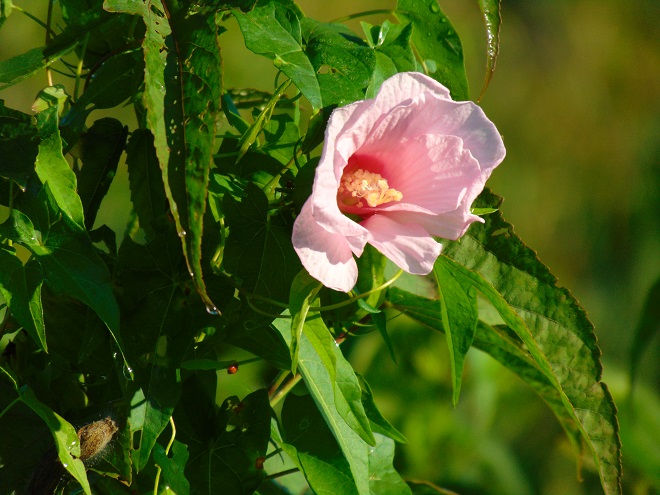The tall seed-topped stems swaying in a summer breeze are a pleasant scene. And the colorful autumn shades of blue, orange, purple, red, and, of course, green leaves on these clumping plants are nice. But of the multitude of flowering plants, Big Bluestem, Freshwater Cordgrass, and Switchgrass aren’t much of a draw. No self-respecting bloom addict is going out of their way to have a gander at any grass that hasn’t been subjugated and tamed by a hideous set of spinning steel blades. Grass flowers…are you kidding?

O.K., so you need something more. Here’s more.
Meet the Partridge Pea (Chamaecrista fasciculata). It’s an annual plant growing in the Riverine Grasslands at Conewago Falls as a companion to Big Bluestem. It has a special niche growing in the sandy and, in summertime, dry soils left behind by earlier flooding and ice scour. The divided leaves close upon contact and also at nightfall. Bees and other pollinators are drawn to the abundance of butter-yellow blossoms. Like the familiar pea of the vegetable garden, the flowers are followed by flat seed pods.

But wait, here’s more.
In addition to its abundance in Conewago Falls, the Halberd-leaved Rose Mallow (Hibiscus laevis) is the ubiquitous water’s edge plant along the free-flowing Susquehanna River for miles downstream. It grows in large clumps, often defining the border between the emergent zone and shore-rooted plants. It is particularly successful in accumulations of alluvium interspersed with heavier pebbles and stone into which the roots will anchor to endure flooding and scour. Such substrate buildup around the falls, along mid-river islands, and along the shores of the low-lying Riparian Woodlands immediately below the falls are often quite hospitable to the species.



A second native wildflower species in the genus Hibiscus is found in the Conewago Falls floodplain, this one in wetlands. The Swamp Rose Mallow (H. moscheutos) is similar to Halberd-leaved Rose Mallow, but sports more variable and colorful blooms. The leaves are toothed without the deep halberd-style lobes and, like the stems, are downy. As the common name implies, it requires swampy habitat with ample water and sunlight.


In summary, we find Partridge Pea in the Riverine Grasslands growing in sandy deposits left by flood and ice scour. We find Halberd-leaved Rose Mallow rooted at the border between shore and the emergent zone. We find Swamp Rose Mallow as an emergent in the wetlands of the floodplain. And finally, we find marshmallows in only one location in the area of Conewago Falls. Bon ap’.

SOURCES
Newcomb, Lawrence. 1977. Newcomb’s Wildflower Guide. Little, Brown and Company. Boston, Massachusetts.











